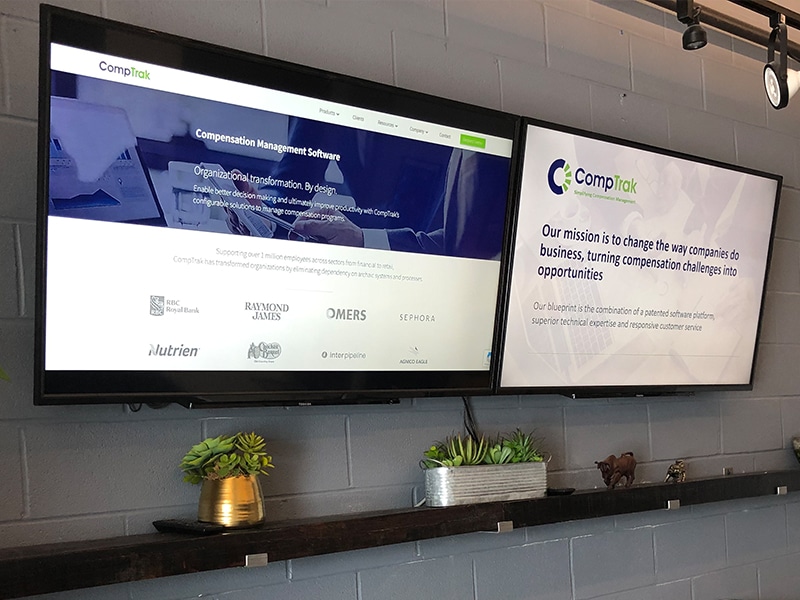Amidst today’s stormy weather of high inflation rates, looming recession and talent challenges, many companies are actively considering their approach to engage employees and promote productivity. Here is a breakdown of bonus management and its crucial role in compensation/employee experience.
In a constantly changing world amidst technological advances and employee consciousness, the role of compensation as a foundation to talent management and business strategy cannot be stressed enough. With rising competition, organizations facing talent shortages are ready to look beyond the basic compensation package and benefits. They have identified the importance of incentives in keeping employees motivated, engaged, and appreciated.
There is a mix of incentives required to trigger and maintain the motivation levels of employees – economic, social, and moral. While the former generally comprises of bonuses, commissions, gift cards and vouchers, paid leaves are also a treasured type. Social incentives are recognition in forms of letter, awards, certificates of appreciation, and various kinds of social events organised. Benefits supporting mental, fitness, and financial health are grouped as moral incentives. While these incentives are designed by organizations, economic incentives are shaped and enforced by market pressure, social incentives are driven by reputation and moral levers guide moral incentives (Deloitte 2022).
What is bonus compensation?
Bonus or incentive compensation is a form of financial compensation which is additional to the fixed salary and is awarded on completion of set targets or goals. Evaluation can be set on parameters for individual or team performance and can be either one-time payments or recurring rewards.
There are several types of bonus compensation, majorly categorised under Performance-Based and Non-Performance-Based Bonuses. While the former depends on the performance of individual, team, or company it includes spot bonuses, commissions, profit-sharing and gain-sharing plans. Non-performance-based bonuses include signing, referral, or retention bonuses. Research suggests individual performance bonuses remain the most popular type and over the years market premium bonuses are one such type that have increased in popularity.
Importance of bonus and incentive compensation
There are several reasons as to why Bonus and incentive compensation are important for both employers and employees.
- Bonuses and incentives can be powerful motivators for employees to perform at their best and leading to increased productivity, improved quality of work, and higher levels of employee engagement and satisfaction.
- Offering bonuses and incentives can help companies retain top talent while reducing turnover and the costs associated with recruiting and training new employees.
- Lucrative bonuses can also help organizations to attract new talent particularly in competitive industries or for hard-to-fill roles projecting itself as a more desirable place to work.
- By tying incentives to specific goals or objectives, companies can help to align employee behavior with their overall business strategy and create a positive work environment.
- Bonuses and incentives are important tools in performance management, helping to identify top performers and provide opportunities for development and growth.
Trends in bonus and incentive management
With rising inflation in 2023, compensation and pay progression will be critical in determining employee experience. In recent years, bonus management has gained popularity and incentive systems are derived to tie bonuses with specific metrics or performance targets that are meaningful to business.
Following are the trends that have gained prominence:
1. Personalization and customization of compensation
Personalization of compensation effectively breaks the model of one-size-fits-all incentive program. Now employees across industries are being given the ability to customize their compensation packages as per their individual needs. The options available to choose the bonus payout in cash, equity or paid time off is not only enticing but also helps to understand employee needs, increase job satisfaction and create better business outcomes. Personalization allows companies to increasingly tailor their bonus and incentive programs based on individual’s performance, skills, and goals.
2. Greater transparency across the organization
Global organizations are increasingly becoming more transparent in rewarding bonuses. There is a growing trend to openly communicate the criteria and process for determining bonuses along with disclosure of the amounts awarded. Some companies are also starting to document their bonus programs on the website.
These efforts help employees to understand how they can earn bonuses and at the same time improve employee satisfaction as they feel their contributions and performance are being fairly recognized. Open communication leads to more coloration and teamwork on teams working towards same goals. This indeed builds an environment for trust and engagement and helps HR to forecast and accrue bonus with higher accuracy.
3. Using performance data to carry data-driven decisions
Technology is being used to help manage bonus cycle with tools for tracking employee performance, administering bonuses and incentives and analyzing program effectiveness. With multiple data points available in real-time, metrics are being used to remove subjectivity from tasks and viewing goal achievement with increased fairness. Better insights are available into an employee’s actual performance to identify strengths and weaknesses of workforce. Also data is used to derive satisfaction levels in employee experience.
Better alignment to company strategy. Keeps employees working towards common goals and objectives.
4. Frequent reward and recognition programs
Once the Friday lunches and employee of the month events were eagerly awaited by employees for receiving a structured bonus plan, but in this new normal HR teams are adapting bonus cycles to keep up with changing employees’ expectations. The rise of reward and recognition programs by peers (which is frequent and flexible) has gained its footing as a trend now with hybrid working models. These allow instant gratification of a public recognition for employees with a quick reward. For HRs these employee engagement tools support communication, perks and benefits and provide feedback, people analytics, and action plans. These assist in boosting positivity and everyday morale having profound effects on productivity and retention (reinforcing desired behaviours).
5. Bonuses made on multiple performance layers
More and more organizations are adopting the practice of using multiple metrics or bonus calculations to reward employees. A tiered bonus structure primarily follows a performance-based criteria. Depending on the role and company size, individual’s bonus amount could be based on different percentage combinations of – individual, team, department, group, division, business unit, overall company’s contribution to growth.
6. Creative bonuses
Organizations are innovating ways to touch upon various aspects to keep the employee motivated. Flexible work schedules, remote work models, extra vacation days, upskilling opportunities are examples of some creative bonuses rolled out to employees.
Effective strategies for bonus cycle management
An efficient bonus cycle has the power to motivate, engage and retain top talent, while aligning employee behavior with the company’s overall goals and objectives. In our previous blog, we have detailed the key proven strategies to effectively manage bonus cycle. To ensure that bonus programs are effective, fair, and transparent, the companies should have a centralized compensation management system which stores annual bonuses, equity rewards, annual salary increases and has easy access to all relevant processes. Continuous feedback and employee check-ins should occur instead of waiting for the end-of-year bonus cycle. The use of non-financial rewards which are less expensive to the companies, have been seen to be highly valued by employees. To instill the sense of culture and cohesiveness team-based rewards have also been observed to encourage collaboration and teamwork among employees.
How does a compensation management platform help with bonus management?
Bonuses are a sub-set of a comprehensive compensation management platform. The calculation, allocation, review, and distribution which earlier could take months to consolidate, has been trimmed to a fraction of the time. Bonus management software provide the dashboard that develops and tracks performance metrics and allows an easy interface to make pay adjustments.
CompTrak offers a high configurable bonus management system that tailors strategies to fit your remuneration and reward practices for a continuous and dynamic performance evaluation.
Key takeaway: Bonuses and incentives are proven powerful motivators, but remote work has made invisible boundaries for getting the same recognition. Employee expectation and needs have changed and it’s a struggle to evaluate and encourage high performance. Organization can no longer afford to use subjectivity and biases for taking important decisions when data-driven decisions are the industry practice for optimizing performance.
As the economy is trying its best to stay afloat in financial crisis, many companies are choosing not to increase base pay and creatively managing incentives to keep top performers productive over the long term.
In an environment where recruitment is getting tougher, the retention of existing employees is critical. The new normal of hybrid working models is constantly pushing competing global players to tweak their compensation packages to better accommodate various drivers leading to amazing employee experiences. With little to zero room left to increase base pay, it is all coming down to differentiating the employee experience with bonuses and appreciation. A configurable compensation management system can strongly support a company achieves its goal of retaining and keeping employees happy and motivated, while achieving the desired goal of creating profits.













